The traditional ghutrah headdress of the Arabs has become one of the symbols of the 2022 World Cup, inspiring the creation of La’eeb, the official mascot of the tournament.
Leaving his hometown of Geneva, Switzerland, Jean Marc Berger traveled to Qatar to follow his national team’s journey in the World Cup, wearing a traditional red and white hat that reflects the colors of the Swiss flag.
However, when he arrived at Stadium 974 to cheer for his country’s second match, it was the traditional Arab ghutrah that this fan used as an accessory to support his team.
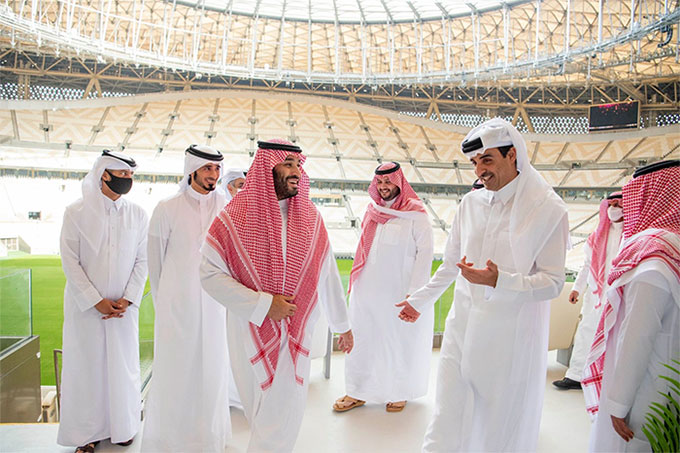
The traditional men’s ghutrah in Arabia.
Before coming to Qatar, Berger never thought he would try on the ghutrah. He worried that doing so might be seen as offensive by the host country, fearing it could be interpreted as disrespecting Qatari culture and violating local sensitivities.
However, not only Berger but all fans from various teams who arrived at the 2022 World Cup were thrilled with this traditional headwear. When the ghutrah was stylized in the colors of the 32 teams in the tournament, it emerged as an essential accessory for the World Cup. They were sold at stalls in Souq Waqif, the market in downtown Doha, as well as in shops at upscale malls. They were even stocked in some major supermarkets.
Ali, one of the five founders of a store specializing in selling ghutrah and traditional garments known as ‘thobes’ in various locations around the city, stated, “They are selling very well. We are a bit surprised by the enthusiasm of tourists. Fans from all over the Americas – the USA, Canada, Brazil, Argentina, etc. – are wearing our hats and outfits in an incredible way.”
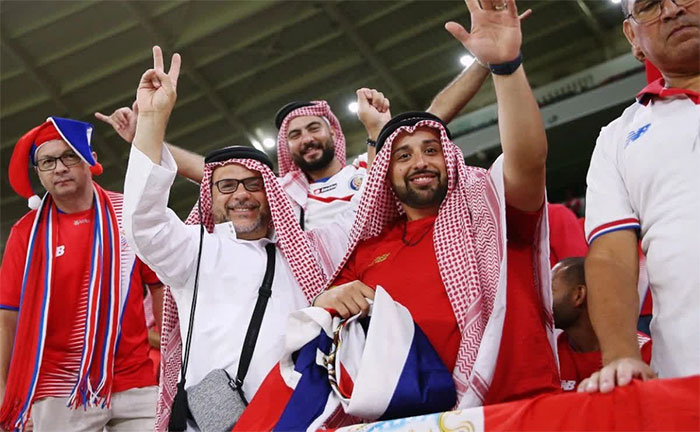
The ghutrah is the best-selling item in Qatar during the World Cup.
Special Significance
Ashraf Abu Issa, the creator of these hats, shared, “The idea of producing hats and headbands in the colors and flags of the national teams participating in the tournament came to me about a year and a half ago.”
“To execute it distinctly, we contacted FIFA and the teams to ensure the colors were accurate, then produced the hats and accompanying headbands for all teams. These hats even carry the official FIFA seal, as a recognized product.”
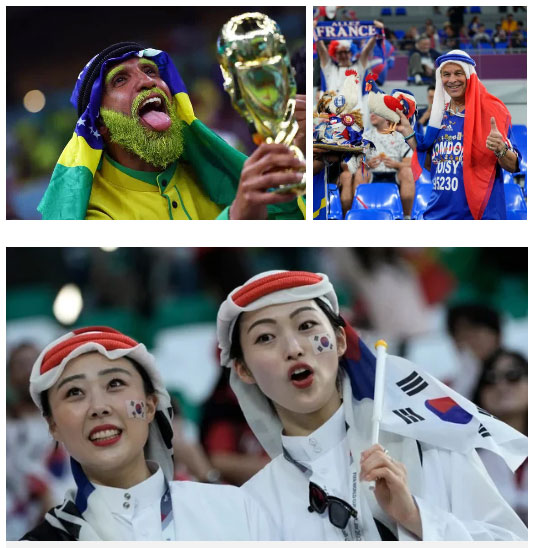
Fans from various countries around the world wearing ghutrah styled in their national colors.
Adding to the idea of selling ghutrah in national colors, Ali mentioned that it was inspired by the desire to brand the tournament, which was held for the first time in the Middle East, with something that distinctly represents the people of the region.
“In South Africa in 2010, we all heard the sound of the Vuvuzela. We didn’t want a World Cup like the normal ones in Germany or Russia where everything is the same. We wanted something that embodies the Arab identity,” Ali emphasized.
Breaking the Ice with Hospitality
Of course, this idea also raised concerns among many about cultural appropriation, which is often viewed as disrespectful in Europe and North America. Contrary to these concerns, most locals do not feel uncomfortable. In fact, they believe that wearing the ghutrah helps tourists cope with the harsh heat of Qatar.
“It’s not a problem. We invited everyone here, and this is part of our culture. Additionally, it is very practical to wear in hot weather,” Ahmed al-Balooshi, a Qatari present in Souq Waqif, candidly shared.
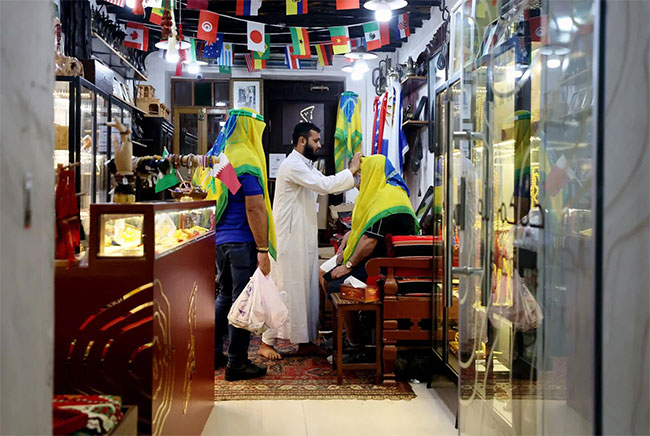
Qataris are eager to guide tourists on how to wear the ghutrah.
Fans also affirmed that visiting Qatar and experiencing the culture of this nation has given them a different perspective and an unforgettable memory. Brazilian fan Jurema Cardoso Arruda stated:
“Being in this country and wearing their traditional attire will be an indelible memory when recalling the 2022 World Cup. I love the integration of different cultures, I enjoyed my time in Qatar, and FIFA and Qatar have organized the World Cup very well.”
“The people of Qatar are very friendly and hospitable. They even invited us to their homes to watch the matches together. They gave our team a special welcome.”
Changing Perceptions Through Cultural Beauty
Moreover, those who wore the ghutrah before the 2022 World Cup were often portrayed in Western media as symbols of a somewhat conservative, unequal, and sometimes backward region.
The sight of World Cup fans from various nations wearing Arab hats not only promotes culture but also helps change perceptions about Arab stereotypes.
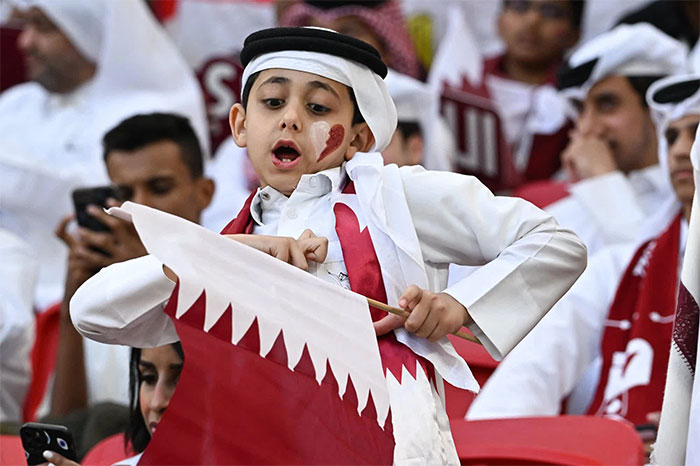
The traditional hat showcases the positive image of a Middle Eastern nation.
“Most fans wear it in the colors of their national flags and buy them as gifts for friends and family. This conveys a true image of these traditional garments. Fans wearing the ghutrah is a positive outcome of breaking barriers and negative stereotypes many had about our country in the past.”
“We also want to convey to fans and everyone who visits Qatar during the tournament the image of tolerance in Islam, hospitality, and Qatar’s openness to all cultures and sports culture in Qatar,” Abu Issa concluded.
In conclusion, the 2022 World Cup has undoubtedly been, is, and will be a significant turning point in history, a true game changer. People from all over the world have had memorable experiences of hospitality, Arab culture, and Islam (the East). The cultural history of the Arabs will be divided into two phases – the picture before and after the World Cup. It will break down cultural barriers and change the minds of many forever.
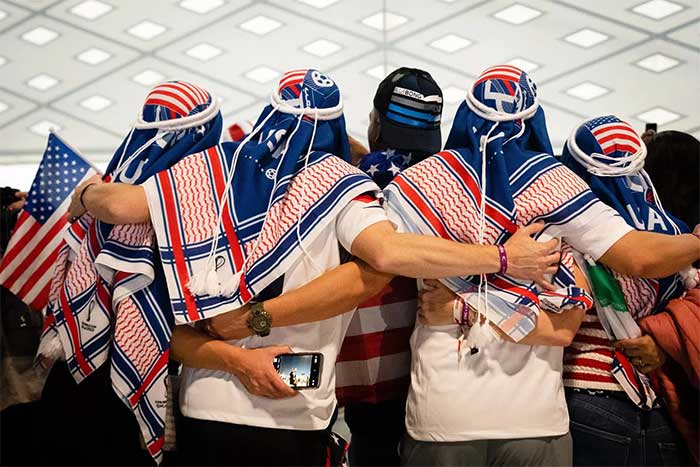
The 2022 World Cup will change the world’s perspective on Arab nations.


















































